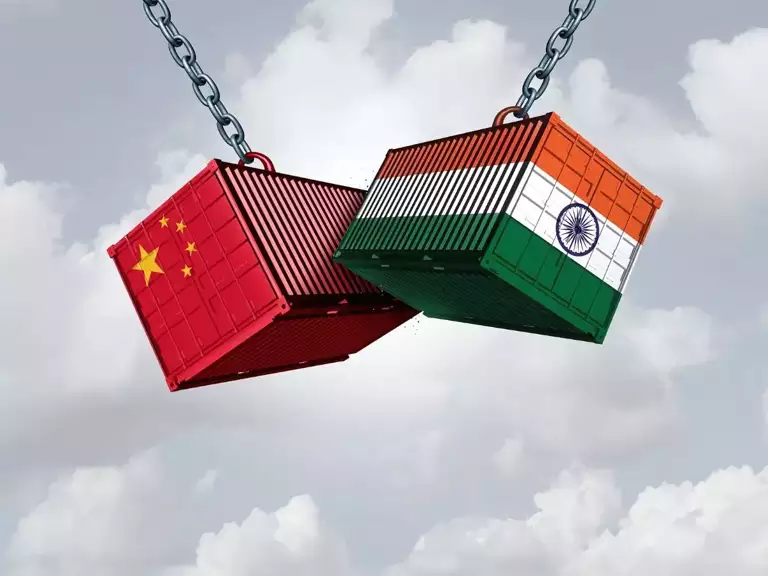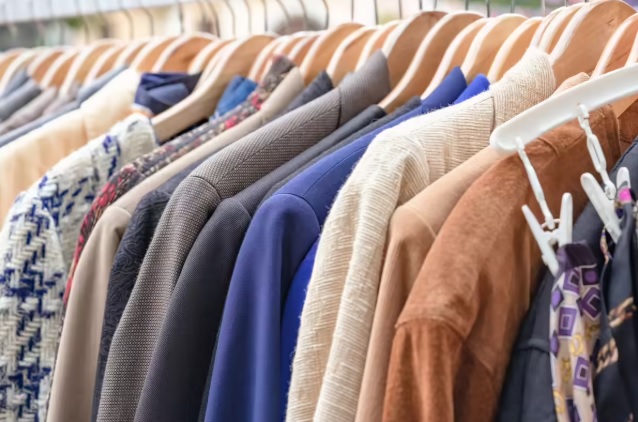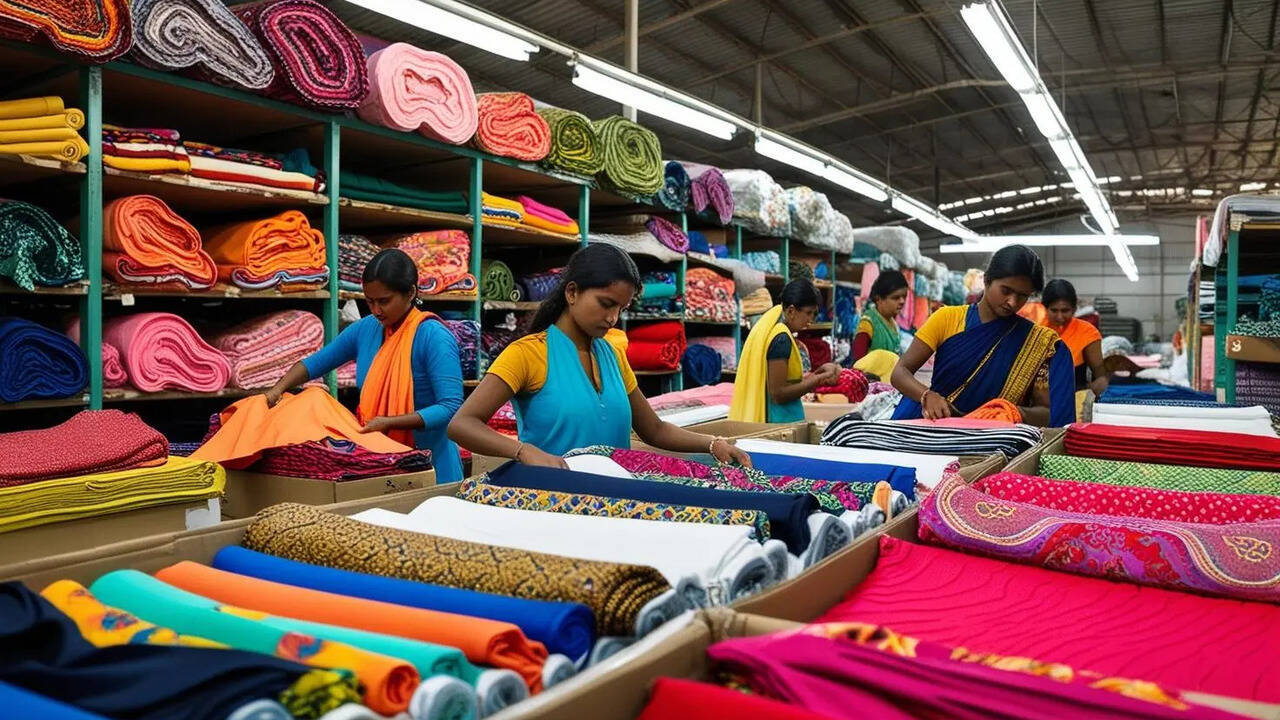FW
Revenues of Levi Strauss & Co’s rose by 6 per cent on a reported basis and 9 per cent on an organic basis to $1.4 billion in In Q2, FY25. This growth was spearheaded by the core Levi's brand with a 9 per cent global organic increase, seeing particularly strong performance in the US and Europe, along with positive contributions from the Beyond Yoga brand.
The company celebrated its 13th consecutive quarter of global DTC comparable sales growth, with DTC revenue increasing by 11 per cent on a reported basis and 10 per cent organically. Its e-commerce revenues also expanded by 13 per cent, strengthening DTC's position as a cornerstone of the business, now accounting for 50 per cent of total net revenues. Wholesale net revenues also saw healthy increases, up 3 per cent reported and 7 per cent organically.
Geographically, the Americas region recorded 5 per cent reported and 9 per cent organic revenue growth, with the US alone seeing a 7 per cent organic increase. Europe emerged as a standout market, achieving impressive 14 per cent reported and 15 per cent organic growth. Revenues in Asia, however, remained flat.
Profitability metrics soared, with Levi's gross margin reaching a record 62.6 per cent, an increase of 140 basis points Y-o-Y. This expansion was primarily attributed to lower product costs and a favorable channel mix. The company’s operating margin significantly improved to 7.5 per cent from 1.5 per cent in Q2 2024, and adjusted EBIT margin rose by 190 basis points to 8.3 per cent.
The yet another strong quarter results delivered by the company reflects its broad-based strength across the board - clear evidence that its strategic agenda is gaining traction, states Michelle Gass, President and CEO of Levi Strauss & Co. It aims to transform into a denim lifestyle brand and best-in-class DTC retailer becomes our reality, he adds.
Despite factoring in higher US tariffs (30 per cent on China imports and 10 per cent on rest-of-world imports), the company raised its full-year guidance. Reported net revenue growth is now projected at 1 per cent to 2 pre cent while organic growth is expected to be between 4.5 per cent and 5.5 per cent Adjusted diluted EPS is now forecast between $1.25 and $1.30, up from the prior range of $1.20 to $1.25. Gross margin expansion is anticipated at 80 basis points, slightly adjusted due to a 20 basis point tariff impact.
Harmit Singh, Chief Financial and Growth Officer, emphasizes, the continued inflection of the company’s financial performance is a direct result of its focus on the core Levi's brand and DTC-first strategy. Levi’s is slowly a company with a higher growth rate, higher margin profile, stronger cash flows and higher returns on invested capital. The positive outlook assumes no major deterioration in macroeconomic conditions, inflation, or additional supply chain disruptions, he adds.
The global Polyester Staple Fiber (PSF) market is on a steady growth trajectory, projected to expand from $25.0 billion in 2024 to $37.2 billion by 2033, demonstrating a CAGR of 4.27 per cent during 2025-2033. This consistent expansion is fueled by PSF's extensive applications across diverse sectors, including textiles, automotive, home furnishings, and industrial uses.
A versatile synthetic fiber derived from PTA and MEG or recycled PET, PSF is prized for its durability, resilience, and cost-effectiveness. It comes in virgin, recycled, and blended variants and is crucial for both woven and non-woven fabric production. A heightened global awareness of sustainability, the increasing adoption of recycled materials, and robust demand from burgeoning economies are collectively propelling the market forward. Its inherent compatibility with sustainable practices further positions PSF as a critical component in the burgeoning circular textile economy.
The textile industry remains the largest consumer of PSF, utilizing it widely in apparel, sportswear, and functional fabrics due to its affordability and performance attributes. Notably, recycled PSF (RPSF) is rapidly gaining market share, driven by growing environmental consciousness and the global push for plastic recycling.
Beyond textiles, PSF finds increasing applications in the automotive sector for car seat padding, insulation, and lightweight nonwoven materials. The booming home furnishing sector also significantly contributes to demand, with PSF used extensively in carpets, upholstery, cushions, and mattresses. Geographically, Asia-Pacific dominates global production and consumption, led by countries like China, India, and Southeast Asian nations, benefiting from abundant raw materials, strong textile exports, and lower production costs.
Key market trends include a significant shift toward the circular economy, with manufacturers investing in closed-loop production and chemical recycling. Blended fiber innovation with natural fibers is also gaining traction for optimal performance. The demand for nonwoven applications in filtration, hygiene, and geotextiles is rising, particularly in medical and construction. Furthermore, the industry is adopting eco-friendly dyes and processes to meet environmental regulations and a surge in demand for functional textiles with properties like moisture-wicking and anti-bacterial features.
Major market drivers include global sustainability initiatives and the demand for recycled fibers, PSF's inherent cost-efficiency and versatility, the impact of urbanization and infrastructure growth on construction and civil engineering, the expanding middle-class consumption in emerging markets, and continuous technological advancements in spinning and processing.
The Japanese parent company of Uniqlo, Fast Retailing anticipates US tariffs to impact its North American operations significantly, leading to planned price increases. Takeshi Okazaki, Chief Financial Officer, Fast Retailing, concedes, it is difficult for the company to absorb all costs. It aims to raise prices wherever possible, while ultimately focusing on creating a sustainable business that securely generates profits, he adds.
Earlier this week, US President Donald Trump set a new August 1 deadline for ‘reciprocal’ tariff rates, which are expected to affect nearly all trading partners. Fast Retailing estimates these tariffs will reduce its fiscal 2025 profits by approximately 1 per cent, a figure limited by proactive early product shipments.
The majority of Uniqlo apparel sold in the US is produced in Southeast Asia and South Asia. This week, Trump notified Sri Lanka, a major source market, that it would face a 30 per cent tariff from August 1. In contrast, Vietnam, which had previously faced potentially crippling tariff levies, is now expected to see a lower 20 per cent US tariff.
For the current fiscal year, ending August, Fast Retailing maintained its operating profit forecast at around $3.7 billion. The company attributes this stability to strategic early shipments of merchandise to the US market, aiming to circumnavigate the immediate impact of the increased duties.
However, operating profits for the three months ending May 31 rose only 1.4 per cent to approximately $1 billion, falling slightly below a consensus forecast of about $1.05 billion. The company's strategy involves focusing on its core Levi's brand and a DTC-first approach to ensure continued financial performance and higher returns on invested capital, assuming no major macroeconomic deterioration or supply chain disruptions.
Despite retaining its position as the world's second-largest apparel exporter, Bangladesh is facing intensifying competition from Vietnam, which is rapidly emerging as a formidable rival in the global market. According to World Trade Organization (WTO) data for 2024, Bangladesh secured $38.48 billion in apparel exports, but with a modest growth rate of 0.21 per cent. In contrast, Vietnam showcased a remarkable growth rate of 9.34 per cent, reaching $33.94 billion in exports, significantly narrowing the gap.
The global apparel market expanded to a total size of $557.50 billion in 2024, marking a 7.08 per cent growth from $520.62 billion in the previous year, indicating a recovery despite the challenges posed by the COVID-19 pandemic. China continues to lead the market, exporting $165.24 billion with a modest 0.30 per cent growth, maintaining a 29.64 per cent market share. Bangladesh holds the second-largest share at 6.90 per cent, while Vietnam has increased its share to 6.09 per cent.
Other significant apparel exporting nations include Turkey ($17.91 billion), India ($16.36 billion), Cambodia ($9.89 billion), Pakistan ($9.28 billion), Indonesia ($8.73 billion), and the US ($7.00 billion). The growth percentages among these countries varied widely, from a robust 24.19 per cent to a contraction of 4.42 per cent, underscoring the dynamic shifts in global sourcing and trade policies.
Mohiuddin Rubel, Former Director, BGMEA and Managing Director, Bangladesh Apparel Exchange, highlighted, Bangladesh's competitors are gaining ground in the global market. He also raised concerns about potential increases in US tariffs on Bangladeshi goods if existing tariff barriers persist, a factor that could further impact the nation's export performance. As the global apparel industry continues to evolve, Bangladesh faces the crucial task of navigating these competitive pressures and evolving trade dynamics to maintain its strong global standing.

In the glittering world of fashion, where storytelling is everything, the small but powerful ‘Made in...’ tag is often the final word on a garment’s origin. It tells the consumer where their clothing comes from—or so they believe. But hidden behind this simple phrase is a global sleight of hand that masks the truth, erases identities, and quietly undermines centuries-old traditions.
In a factory in Noida, an artisan painstakingly embroiders a silk gown with zardozi threadwork passed down through generations. A few weeks later, that same gown is assembled in a Parisian workshop, given a final steam press, and tagged ‘Made in France’. The artisan’s story, and the country where most of the craftsmanship occurred, disappears in an instant.
This isn’t an isolated incident. It’s a global norm.
The loophole that changed everything
Thanks to a technicality in global trade law—specifically the WTO’s rule of ‘last substantial transformation’—brands can legally label a product based on where its final stage of production occurs, regardless of where most of it was made.
A leather handbag can be cut, stitched, and finished in Vietnam. But if its metal clasp is affixed in Milan, it earns the right to say ‘Made in Italy’. Similarly, a pair of jeans sewn in Bangladesh but distressed in Turkey emerges as ‘Made in Turkey’. This manipulation is not just legal—it’s deliberate. Stakeholders estimate that up to 90 per cent of a garment’s production may happen in one country, only to be rebranded through minor finishing elsewhere. A senior sourcing executive explains and says, it’s storytelling, not transparency.
The cost, erased artisans and stolen heritage
Nowhere is this deception more painful than in countries like India, Bangladesh, and Cambodia—all rich in textile history and home to generations of skilled artisans. Their contribution is crucial to the global fashion machine, yet they remain invisible.
As an artist working in craft clusters of Gujarat opines, they are not just losing jobs or fair wages rather they are losing ‘pride’. When a bridal gown that took three weeks of their best handwork is called ‘Made in France,’ it’s not just mislabelling, it’s theft. This isn’t merely about geography; it’s about erasure. Techniques like chikankari, kantha, and phulkari, each with centuries of cultural history, are commodified and rebranded under Western luxury labels with no mention of their true origins.
Selling illusions, the marketing of origin
For consumers, Made in Italy or Made in France isn’t just a label—it’s a promise of quality, heritage, and authenticity. These perceptions justify the high price tags. But that illusion is meticulously constructed and carefully maintained. A buyer paying $2,000 for a so-called French gown may never realize it was largely handcrafted in India. The romance of European couture is preserved, while the reality—a multi-country production involving low-wage labor—is concealed. Consumers think they’re paying for European quality, at a premium fashion house. In truth, they’re paying for European branding.
The real price of deception
This deception doesn’t just distort perception; it actively harms development. When garments made in South Asia are falsely labeled, it robs these regions of both recognition and economic opportunity.
If labels told the truth—if consumers saw “Hand-embroidered in India, Assembled in France,” perhaps they may not value the product more; perhaps brands may invest more in uplifting artisan communities and textile infrastructure. As textile researcher Priya Nair puts it, there’s a global market for Indian craftsmanship. But first, the world needs to know where it actually comes from.
The threads unravel
Luxury leather nags: A globally celebrated Italian brand sources leather panels and lining from Vietnam. The bag is stitched entirely in Asia but gets its ‘Made in Italy’ label after a logo plate is attached in Florence.
High-street denim: Jeans woven and stitched in Bangladesh are sent to Turkey for a final wash. The jeans, now with ‘Made in Turkey’ tag, are sold as products of Turkish denim heritage.
Couture gowns: Exquisite gowns embroidered in India are assembled and pressed in French studios. Despite Indian artisans' central role, only Paris makes the label.
Responsibility towards honest fashion
While global trade rules won’t change overnight, transparency must start with the brands—and the buyers. Co-origin labeling like ‘Crafted in India, Finished in Italy’ can help tell a more honest story. Some ethical brands have already embraced this practice, turning transparency into a competitive edge. Consumer awareness is key. Every purchase is a vote—one that can either uphold an illusion or demand integrity. In a fashion world built on stories, let’s ensure the one we wear includes everyone who shaped it.
The Yamuna Expressway Industrial Development Authority (Yeida) has revived plans to establish a dedicated Handloom and Textile Park near the Noida International Airport, along the Yamuna Expressway. This initiative aims to create a focused cluster for handloom and handicraft units in Sector 10 of the Yeida area.
The Handloom Handicraft Exporters Welfare Association (HHEWA), which was initially promised land for the park three years ago, has now been instructed by Yeida to reapply. They also need to secure approval from the Uttar Pradesh government to develop this park, drawing inspiration from Yeida's successful Apparel Park in Sector 29.
According to RK Singh, CEO, Yeida, the park will focus on the handloom and handicrafts sectors, enabling entrepreneurs to apply for industrial plots up to 8,000 sq m through e-auction.
In September 2022, Yeida had confirmed its board's approval for the park in Sector 10, where land acquisition was already underway, following the model of other sector-specific clusters. HHEWA had previously submitted a list of over 150 members eager to establish manufacturing units in this sector, ideally located near the India Expo Mart in Greater Noida.
However, the project stalled despite several meetings, says CP Sharma, President, HHEWA. Exporters have voiced concerns regarding the state policy's mandate for e-auction for plots up to 8,000 sq m, fearing that smaller exporters may lack the resources to compete effectively in such a bidding process.
To be held from September 2-4, 2025 at the National Exhibition and Convention Center in Shanghai, Yarn Expo Autumn aims to boost international collaboration across the upstream and downstream textile supply chains. The fair will be organized by Messe Frankfurt (HK) and Sub-Council of Textile Industry, CCPIT.
Following a successful previous edition that connected around 540 global exhibitors with nearly 22,000 buyers from 81 countries, the upcoming show, co-located with Intertextile Apparel, will continue to serve as a vital platform for yarn and fiber trade. It will primarily focus on innovations addressing the growing demands for eco-friendly and functional textiles. The event's fringe program, featuring forums and trend displays, is also expected to drive engaging discussions.
Emphasizing the critical role of fostering ‘innovation, sustainability, and collaboration’ in the yarn and fiber sector, Wilmet Shea, General Manager, Messe Frankfurt (HK) highlights Yarn Expo's commitment to providing an international platform that supports industry growth and meets contemporary demands. Shea expresses confidence in the expo's continued success, anticipating new opportunities this autumn.
Driven by a population growth, sportswear demand and socioeconomic advancements alongiwt a growing focus on sustainable production, the global yarn, fiber, and thread market is projected to reach $138.8 billion by 2029, growing at a CAGR of 6.4 per cent, driven by population growth, sportswear demand, and socioeconomic advancements, with sustainable production being a top priority.
Yarn Expo Autumn is strategically positioned as an international sourcing hub, aligning with global eco-friendly and functionality trends by gathering key industry players from Asia and beyond. The 2024 edition featured dedicated zones for India, Pakistan, and an International Zone, alongside six key product zones covering regenerated, cotton, synthetic, specialty, and elastic products.
Exhibitors from the previous edition, Shailesh Jain, Director, Shanti Rayons India, hails the ‘good collections and valuable contacts,’ noting discoveries like ‘seaweed-made Chinese yarn’ and the benefits of the trend forum.
Karuna Changmai, Vice President and Global Sales Head, Thai Acrylic Fibre Co, lauds the fair's ability to attract international and Chinese visitors, emphasizing its focus on sustainability as crucial for the future of fashion.
China emerged as the leading global exporter and importer of textile yarns in 2024, with India, Italy, and Türkiye also ranking highly on both lists, reflecting their strong presence among the expo's visiting countries.
Tajikistan aims to boost its textile exports to $3 billion in the future by significantly increasing domestic cotton processing and establishing closed production chains. The country currently, processes only about 30 per cent of the cotton grown in the country, with the remaining 70 per cent being exported as raw material.
According to Sherali Kabir, Minister of Industry and New Technologies, Tajikistan’s textile and cotton fiber exports reached approximately $300 million last year. This figure can be raised by making strategic investment and an increased focused on finished products, he opines.
A cornerstone of Tajikistan's fourth national strategy, this initiative aims to accelerate industrialization and a double overall industrial production within the next five years. A key component of this strategy is the establishment of full-cycle clusters, encompassing every stage from cotton cultivation to the manufacturing of final textile products.
Under the Strategy for the Development of the Textile Industry, adopted two years ago, Tajikistan plans to create over 600,000 new jobs and ensure the complete processing of all locally grown cotton. This integrated approach is expected to transform the country's textile sector, making it a more significant player in the global market. The focus on adding value domestically rather than exporting raw materials is central to Tajikistan's long-term economic growth and job creation efforts.
UK-based off-price fashion marketplace, Secret Sales plans to expand its presence in the European market by acquiring two Dutch brands, V&D (Vroom & Dreesmann) and To Be Dressed.
Once a cornerstone of Dutch high street shopping, V&D holds deep sentimental value across generations. Chris Griffin, CEO, Secret Sales, emphasizes, more than just a brand, V&D is a part of the Dutch story. The brand holds a special place in people’s lives, with memories and meaning that stretch across generations. He sees this as a unique opportunity to evolve V&D while honoring its cherished legacy, aiming to re-establish it as the ‘modern, go-to destination for fashion in the Netherlands.
The acquisition also includes To Be Dressed, an established online platform known for its curated, discounted fashion selection, appealing to a younger, price-savvy demographic. Both V&D and To Be Dressed will retain their distinct brand identities, but will benefit immensely from Secret Sales' robust tech infrastructure and access to a vast €2 billion inventory from over 4,500 global brands. The goal for V&D is to relaunch with a significantly expanded product offering, aiming to restore its status as a household name for Dutch shoppers by providing value, familiarity, and a locally relevant assortment.
This strategic acquisition boosts Secret Sales' European footprint, expanding its reach to seven markets, 17 million users, and a growing catalog of over one million products. It follows a series of other impactful buys, including Dreivip, Dress for Less, and Afound, signaling Secret Sales' aggressive expansion strategy.
Jonathan Kahn, Partner, Cool Investments and Outgoing Owner, V&D, affirms, this sale to Secret Sales marks the beginning of an exciting new chapter. With their scale, platform, and ambition, V&D is now perfectly placed to grow beyond that foundation and reclaim its former glory – once again becoming a trusted destination for the Dutch people. This partnership is poised to bring a nostalgic yet modernized shopping experience back to Dutch consumers, he adds.
The US retail industry continues to face significant challenges, with luxury retailer Nordstrom and department store chain JCPenney announcing store closures. This move reflects the broader struggles within the sector, grappling with a difficult economic climate and evolving consumer behavior.
Nordstrom is slated to shut down two of its locations by the end of August. It will close the Saint Louis Galleria Nordstrom store in St Louis, Missouri on August 24, followed by the Nordstrom store in Santa Monica, California, on August 26. The company confirmed these closures as it works to maintain its financial stability.
Following Nordstrom's announcement, JCPenney revealed plans to close a few of its own stores in the coming months. The company cited various reasons for these closures, including expiring lease agreements and market changes, as it endeavors to adapt to rapidly shifting retail conditions. The retailer plans to close eight JCPenney locations across eight different states.
Further underscoring the industry's difficulties, US retail closures last fall reached their highest level since the COVID-19 pandemic, according to data from Coresight Research. The impact extends to employment, with job cuts in the retail sector rising by 80 per cent in the first five months of 2025 compared to the same period last year, a report from Challenger, Gray & Christmas indicates.
Andrew Challenger, Senior Vice President, Challenger, Gray & Christmas, notes, factors such as tariffs, funding cuts, consumer spending, and overall economic pessimism are putting intense pressure on companies’ workforce." Companies are spending less, slowing hiring, and sending layoff notices, with store closures being a direct contributor to these job reductions, he adds.











